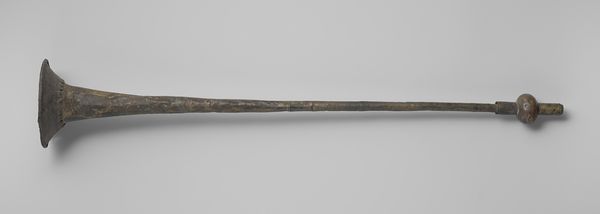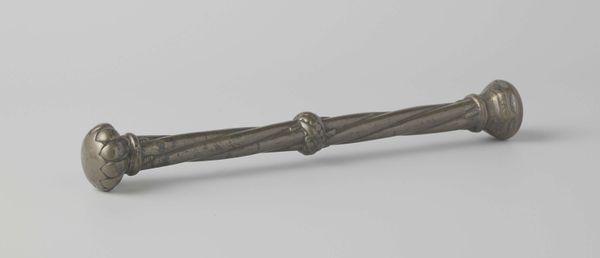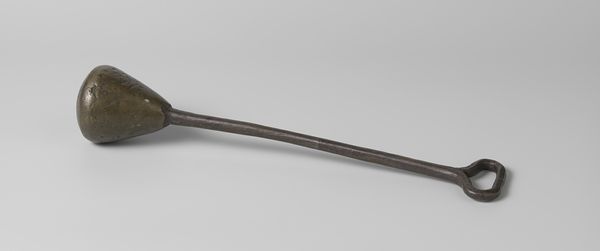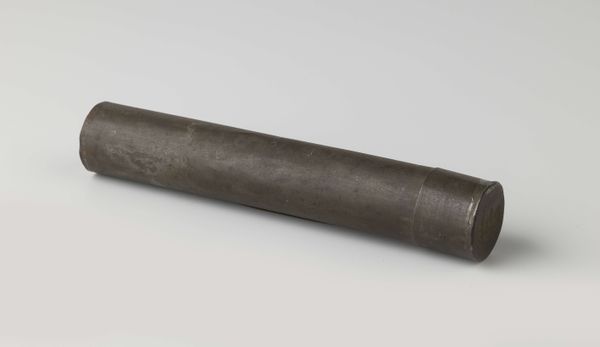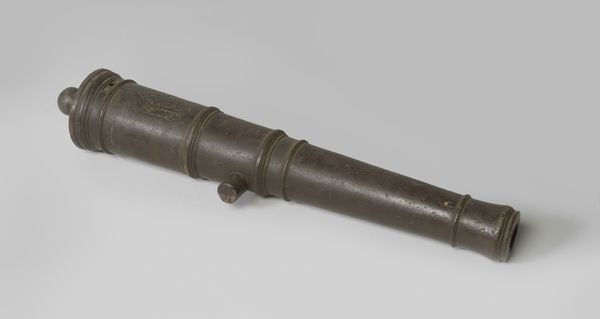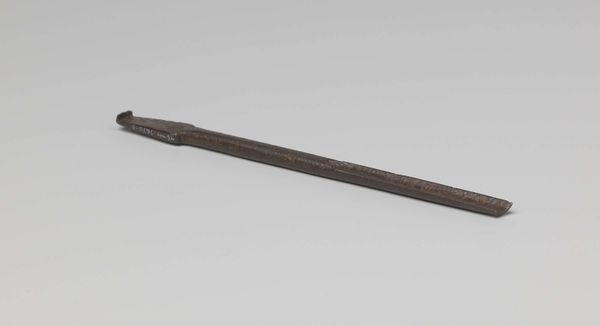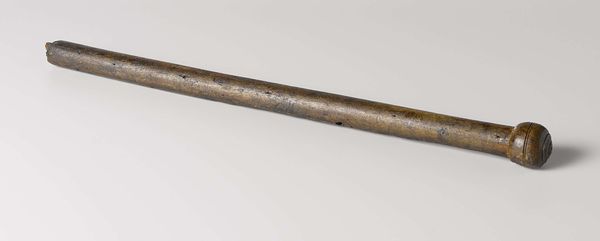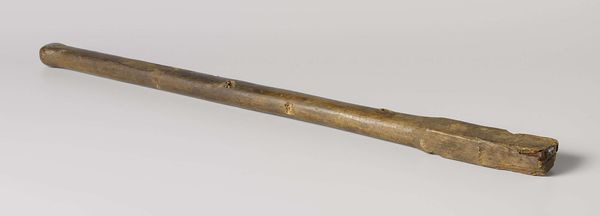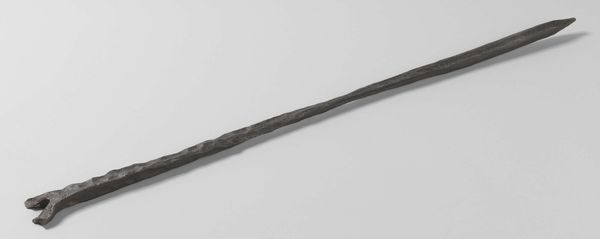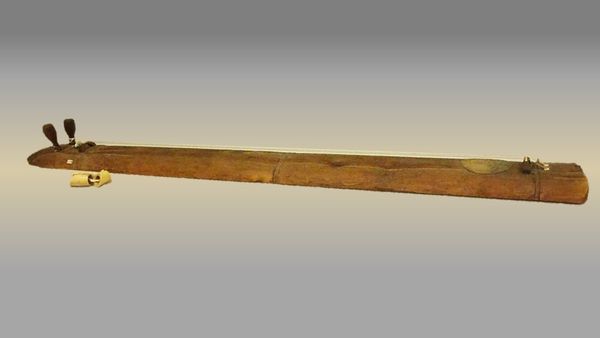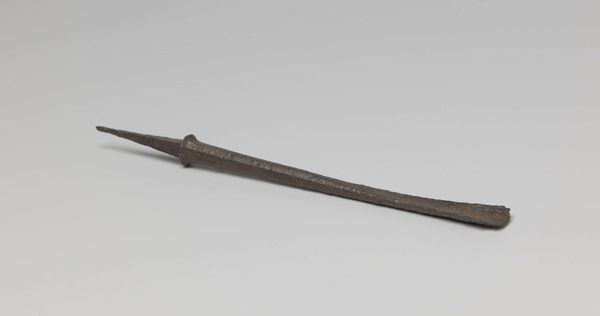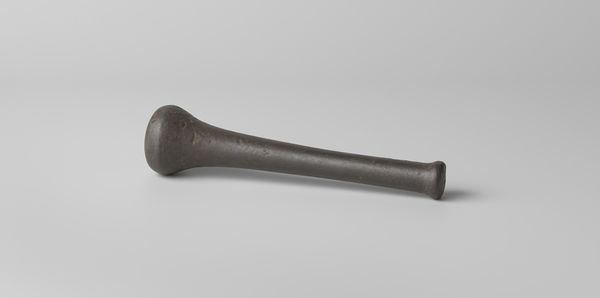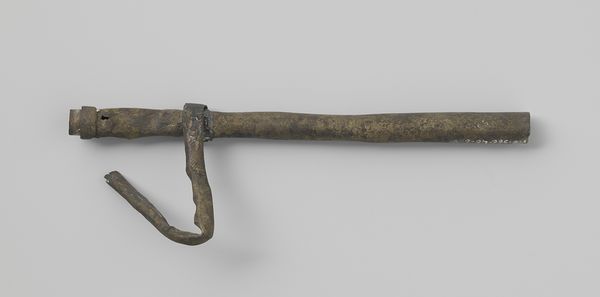
bronze, sculpture
#
baroque
#
bronze
#
sculpture
Dimensions: length 33.4 cm, diameter 4.1 cm
Copyright: Rijks Museum: Open Domain
Editor: Here we have Cornelis Ouderogge’s bronze sculpture, "Mortar and Pestle," crafted in 1637. I’m immediately struck by its unassuming nature; it's so simple, so practical, yet there's an elegance to the form. How do you read into this work, beyond its apparent function? Curator: It's that 'apparent function' that’s so juicy, isn’t it? Imagine holding this bronze instrument. It grounds us in a domestic sphere centuries gone, whispering tales of daily life. This isn't merely an object; it’s a portal to a 17th-century kitchen. Baroque art isn't always about grand pronouncements; sometimes, it finds its poetry in the everyday, elevated through careful craftsmanship. Don't you find something inherently soothing about such unpretentious artistry? Editor: Absolutely. The choice of bronze also gives it a sense of weight, importance. I guess I always assumed Baroque meant massive and gilded. Curator: Aha! And there's the lovely surprise, isn't it? The Baroque period was like a rebellious teenager— rejecting all the constraints of the Renaissance. Its sculptures wanted to be about *real life*. How wonderfully ironic is that that? Think of all the textures this sculpture alludes to. It sparks the mind... all those tastes and medicinal herbs that it might have mashed through time! It’s sensory, almost alchemic, don’t you think? Editor: It does! I hadn't considered the tactile, sensory aspects so deeply. I suppose I focused too much on a narrow understanding of Baroque. Curator: Excellent! The true magic of art, really, lies in moments like these, when expectations are delightfully overthrown and minds are, dare I say it, ‘mashed.’
Comments
rijksmuseum about 2 years ago
⋮
This mortar is adorned with two friezes. The top one consists of stylized flowers, while the bottom one features flowers, foliage motifs, and birds with spread wings. Inscribed in Latin along the top edge is: ‘By the grace of God, Ouderogge made this in 1637.’ The mortar was cast by either Cornelis or his brother Dirk. They also made bells and cannons.
Join the conversation
Join millions of artists and users on Artera today and experience the ultimate creative platform.
